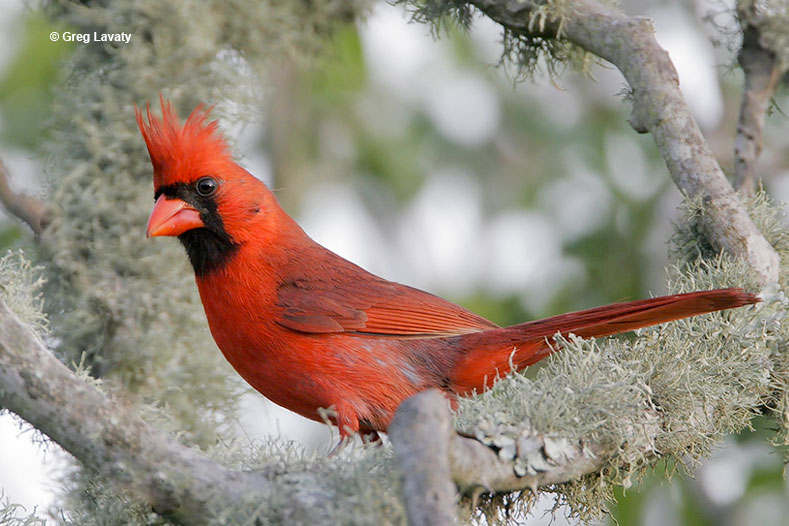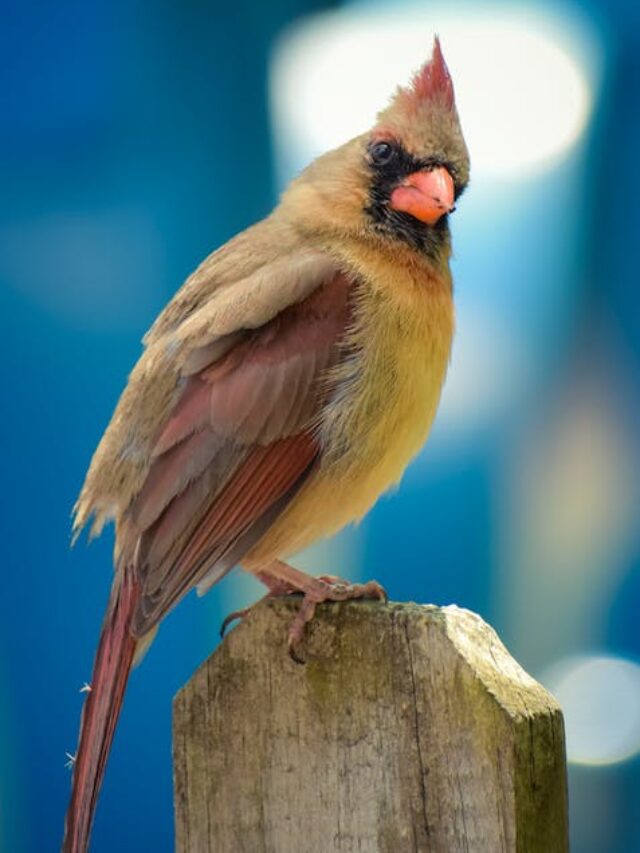Northern Cardinals (Cardinalis cardinalis) are striking songbirds known for their vibrant red plumage, territorial nature, and distinctive crested heads.
Native to eastern and central North America, these birds are most active in the mornings and evenings and can be found in a variety of habitats, including forest edges, suburban gardens, and parks.
On this page
Identification
Northern Cardinals are fairly large for a songbird, with their length ranging between 8.3-9.3 inches and wingspan between 9.8-12.2 inches. They have long tails, thick reddish-orange conical bills, crested heads, and dark brown, almost black eyes.
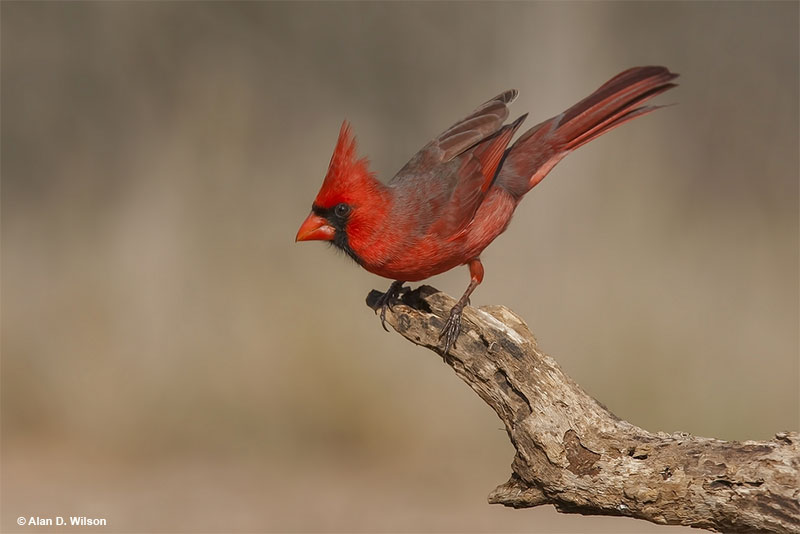
Male northern cardinal
Male Northern Cardinals have overall crimson-red plumage and a black throat and band around their bill. The red on the back and wings is duller and has a slight blackish tinge to it. Female Northern Cardinals are pale greenish-brown with a red tint on their tail, wings, and crest.
Read more: What do red birds symbolize?
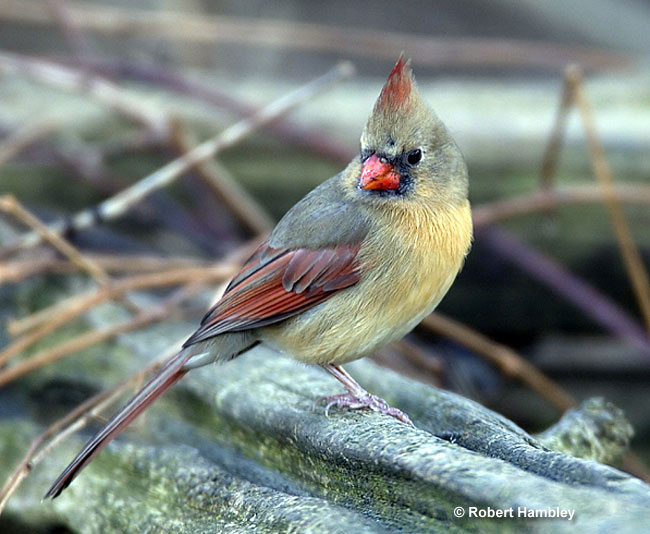
Female northern cardinal
Juvenile Northern Cardinals look very similar to females, but they can be easily distinguished from adults by their dark gray bills.
Northern Cardinals are diurnal and active during morning and evening hours. During the breeding season, they typically become territorial and move around in pairs whereas during the fall and winter, they are more social and form flocks which may include other species.
Northern Cardinal Song
Northern Cardinals sing with clear whistling phrases that sound like whoit whoit whoit, whacheer whacheer, or birdie birdie birdie. The song often ends with a trill.
Learn more: What does a cardinal sound like?
Both males and females sing, with males often singing year-round and the peak occurring in spring and early summer. Northern Cardinals have different calls, the most common being a simple metallic chip used to keep contact and give an alarm.
Food
Northern Cardinal’s diet is quite varied but mostly consists of different kinds of seeds, grains, and berries with the occasional insect.
Their preferred meal is seeds that can be easily extracted from the husk but when food is scarce, they will eat anything they can.
Plant foods include seeds, grains, buds, flowers, and berries, including wild grapes, buckwheat, sedges, mulberry, sumac, and corn. If you want to attract Northern Cardinals, fill your bird feeders with sunflower seeds.
Animal foods include different insects, beetles, leafhoppers, crickets, flies, centipedes, spiders, moths, and butterflies. Adults mostly feed on plant matter, whereas nestlings are fed with insects.
These birds are active foragers, hopping on the ground, in low bushes, and occasionally higher in trees. They readily visit bird feeders for food.
Nesting and Eggs
Northern Cardinals have one to two broods in a year and are serially monogamous, meaning that they stay together for at least one breeding season. The male establishes and defends nesting territory by singing and attacking intruders.
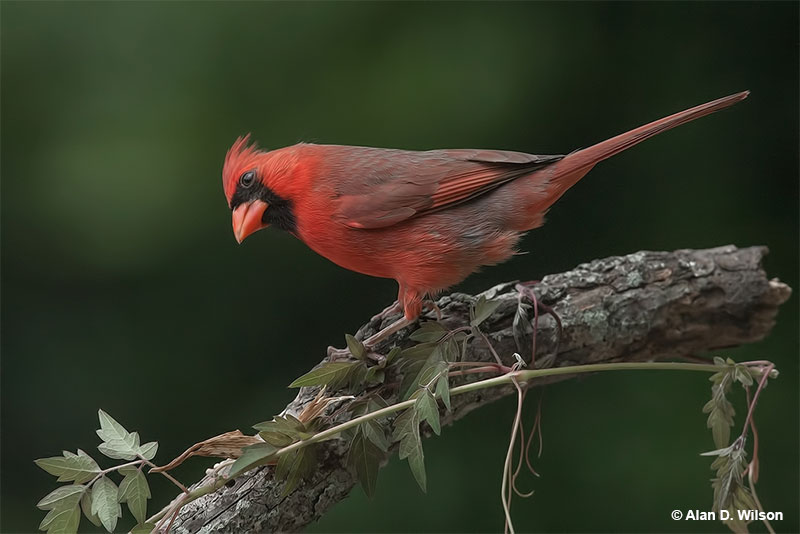
Northern Cardinals nest in a dense tangle of vines or twigs within shrubs and low on trees. Males help with collecting material, whereas the female does most of the building. She will bend and chew on twigs and then shape them into a cup. This is in turn covered with a layer of leaves, then lined with pieces of soft and thin bark, and finally with grasses, stems, and other fine materials.
Northern Cardinals have 2-5, mostly 3-4 eggs in a clutch. The eggs are about an inch long and can be from whitish and pale buffy to pale bluish or pale greenish white, speckled with darker colors.
Generally, the mother bird incubates the eggs alone for 12-13 days. Nestlings are fed by both parents and are ready to leave the nest after about 7-13 days. They become independent around 25-56 days after that.
Current Situation
Northern Cardinals are non-migratory throughout their range in eastern and central North America. They prefer to live in brushy or semi-open habitats, such as forest edges, suburban gardens, thickets, parks, brush, and mesquite.
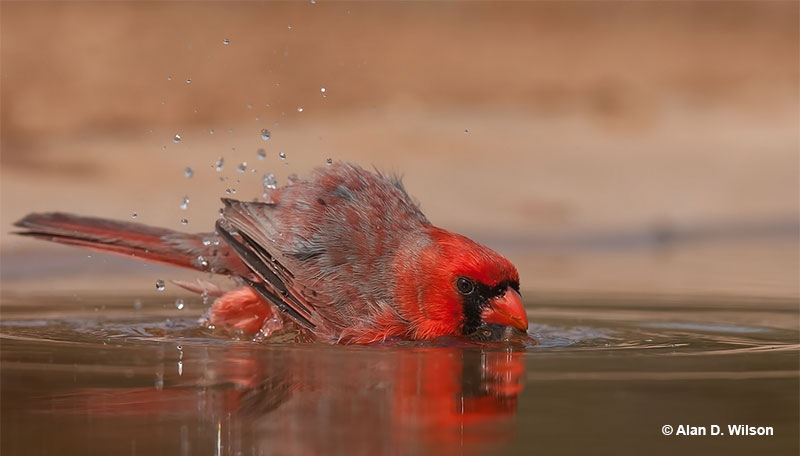
© Alan D. Wilson
This species is listed as of least concern on the IUCN Red List, with their population remaining stable or even increasing.
Humans and Northern Cardinals mutually benefit from each other’s existence. People leave seeds at bird feeders, which helps the birds to survive the winter, whereas the cardinals help disperse plant seeds and to some extent control the insect population.
The average lifespan of a Northern Cardinal is about 3-5 years, with the annual survival rate for adult birds being around 60-65%. They are hunted by cats, various raptors, and squirrels, and their eggs are eaten by snakes, other birds, and squirrels.
Facts
- Northern Cardinal happens to be a state bird for 7 states: Illinois, Indiana, Kentucky, North Carolina, Ohio, Virginia and West Virginia.
- The Northern Cardinal is an angry bird. Both figuratively and in real life. The males become very aggressive during the breeding season and often attack even their own reflection because they see it as a competition.
- There are many types of cardinals in addition to the common red one. On rare occasions, you may encounter a white or a yellow cardinal, caused either by leucism or xanthochroism respectively.
- Northern Cardinals are favorites amongst people and as such have earned many different names, including winter redbird, Virginia nightingale, and crested red-birds.
- The red of Northern Cardinals comes from pigments called carotenoids which they get by eating food that contains it. The more vibrant the male, the more attractive females will find him.
Similar Species
Even with their vibrant red plumage, Northern Cardinals do have some similar species. We have introduced three of them.
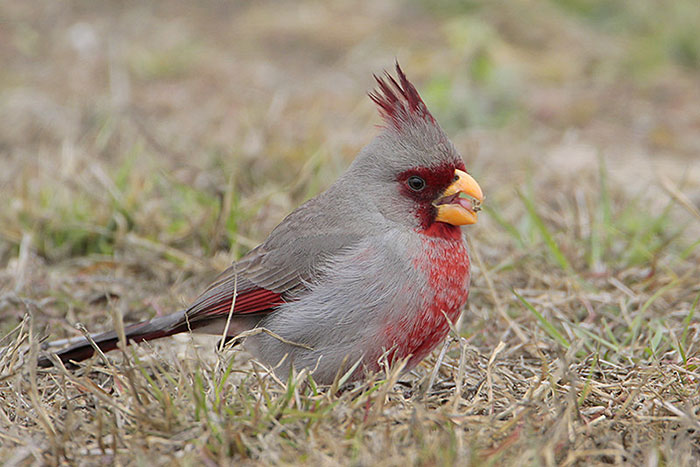
Pyrrhuloxia. Photograph © Greg Lavaty
This species is also from the genus Cardinalis and rather similar in terms of body shape.
The male and female of Pyrrhuloxia can be easily confused with female Northern Cardinals.
However, Pyrrhuloxias have yellow instead of reddish bills, and they appear grayer overall.
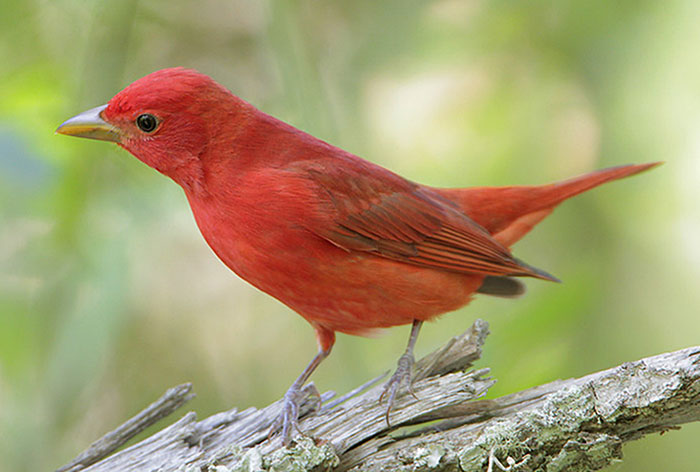
Summer Tanager
The males of the species are quite similar since they’re red all over.
However, male Summer Tanagers don’t have a black face mask or a crest and their light-colored bill is straighter and longer than that of a Northern Cardinals.
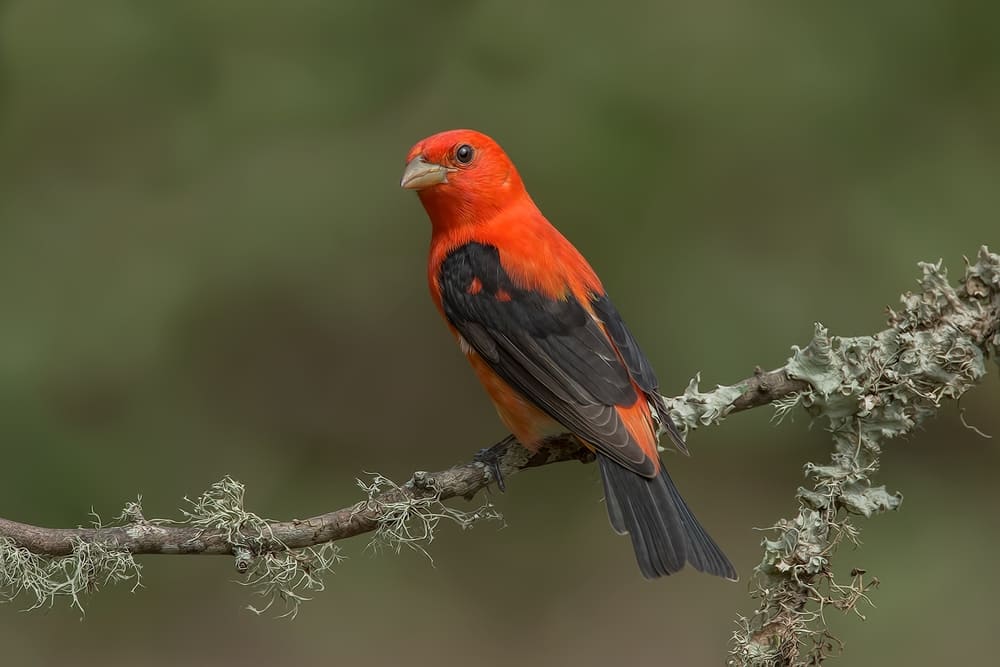
Scarlet Tanager
A male Scarlet Tanager, in its breeding plumage, may be confused for a Northern Cardinal.
However, Scarlet Tanager has solid black wings and tail that contrast with its red body whereas a male Northern Cardinal is red all over.
Scarlet Tanager also lacks the black face mask.
Frequently Asked Questions
Are Northern Cardinals good luck?
Seeing a Northern Cardinal is believed to mean good luck. They are also seen as spiritual messengers, carrying signs from someone who has passed.
Do cardinals come back to the same place every year?
Northern Cardinals stay in the same place throughout the year. If you want to attract some, fill your bird feeder with sunflower seeds and have some brushy areas for it to hide in.
What kind of trees do cardinals nest in?
Cardinals nest in dense shrubs and low trees, such as spruce, mulberry, dogwood, crabapple, and serviceberry.
What colors attract cardinals?
Cardinals may be attracted to the colors yellow, red, and pink.
Do cardinals mate for life?
Cardinals may mate for life. They are serially monogamous and it is not unheard of for some pairs to stay together throughout their lifetime.
Where do cardinals nest at night?
Cardinals nest in well-hidden, often brushy spots in foliage at night.
What color are cardinal eggs?
Cardinal eggs can be anywhere from whitish and pale buffy to pale greenish or bluish. They are speckled with darker colors, such as pale gray, brown, or violet.
When were cardinals discovered?’
Cardinals were first discovered, or rather first described in 1758 by Carl Linnaeus in Missouri.

